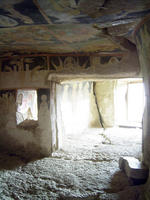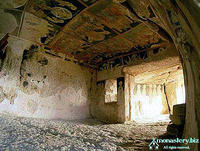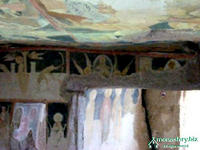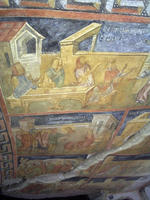You are in: Europe -> Bulgaria -> Rock-Hewn Churches o... , and traditional search or Image Gallery will yield results of this site only
Rock-Hewn Churches of Ivanovo
| Site number: | 45 |
|
| Type of site: | Cultural | |
| Date: | 12-14 century | |
| Date of Inscription: | 1979 | |
| Location: | Europe, Bulgaria, Ivanovo | |
| Video: |
|
Up to 75 images are shown here. Click on each for more details or on Image Gallery for more images.
| Description: | In the vicinity of the village of Ivanovo (valley of the Roussenski Lom River, north-east Bulgaria) developed a complex of rock-hewn churches, chapels, monasteries and cells. The site marks the place where, during the 12th century, the first hermits had dug out their cells and churches. The 14th-century church murals portray the exceptional skill of the artists from the Tarnovo school of painting. --WHMNet paraphrase from the description at WHC Site, where additional information is available. | |
| he Rock-hewn Churches of Ivanovo (Bulgarian: Ивановски скални църкви, Ivanovski skalni tsarkvi) are a group of monolithic churches, chapels and monasteries hewn out of solid rock and completely different from other monastery complexes in Bulgaria, located near the village of Ivanovo, 20 km south of Rousse, on the high rocky banks of the Rusenski Lom, 32 m above the river. The complex is noted for its beautiful and well-preserved medieval frescoes. The caves in the region had been inhabited by monks from the 1320s, when it was founded by the future Patriarch of Bulgaria Joachim, to the 17th century, where they hewed cells, churches and chapels out of solid rock. At the peak of the monastery complex, the number of churches was about 40, while the other premises were around 300, most of which are not preserved today. Second Bulgarian Empire rulers such as Ivan Alexander and Ivan Asen II frequently made donations to the complex, as evidenced by donor portraits in some of the churches. Other patrons included nobles from the capital Tarnovo, with which the monastery complex had strong ties in the 13th and 14th century. It was a centre of hesychasm in the Bulgarian lands in the 14th century and continued to exist in the early centuries of the Ottoman rule of Bulgaria, but gradually decayed. The monastery complex owes much of its fame to 13th- and 14th-century frescoes, preserved in 5 of the churches, which are thought of as wonderful examples of Bulgarian mediaeval art. The rock premises used by the monks include the St Archangel Michael Chapel ("The Buried Church"), the Baptistery, the Gospodev Dol Chapel, the St Theodore Church ("The Demolished Church") and the main Holy Mother of God Church, with the 14th-century murals in the latter one being arguably the most famous of all in Ivanovo and noted as some of the most representative examples of Palaeologan art. Many century-old inscriptions have also been preserved in the monastical premises, including the famous indented inscription of the monk Ivo Gramatik from 1308–1309. The Rock-hewn Churches of Ivanovo were included in the UNESCO World Heritage List in 1979. --Wikipedia. Text is available under the Creative Commons Attribution-ShareAlike License. | ||
| Source: | http://whc.unesco.org/en/list/45 | |
| Source2: | http://whc.unesco.org/en/list/45/video | |
| Reference: | 1. UNESCO World Heritage Center, Site Page. | |


 NHK World Heritage 100 series
NHK World Heritage 100 series









